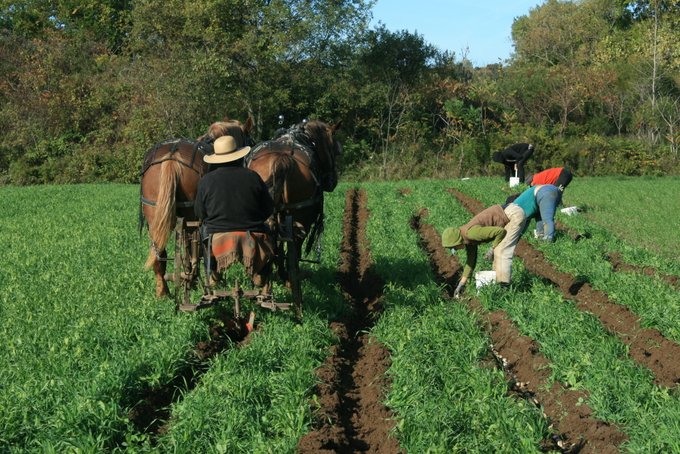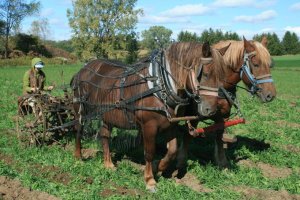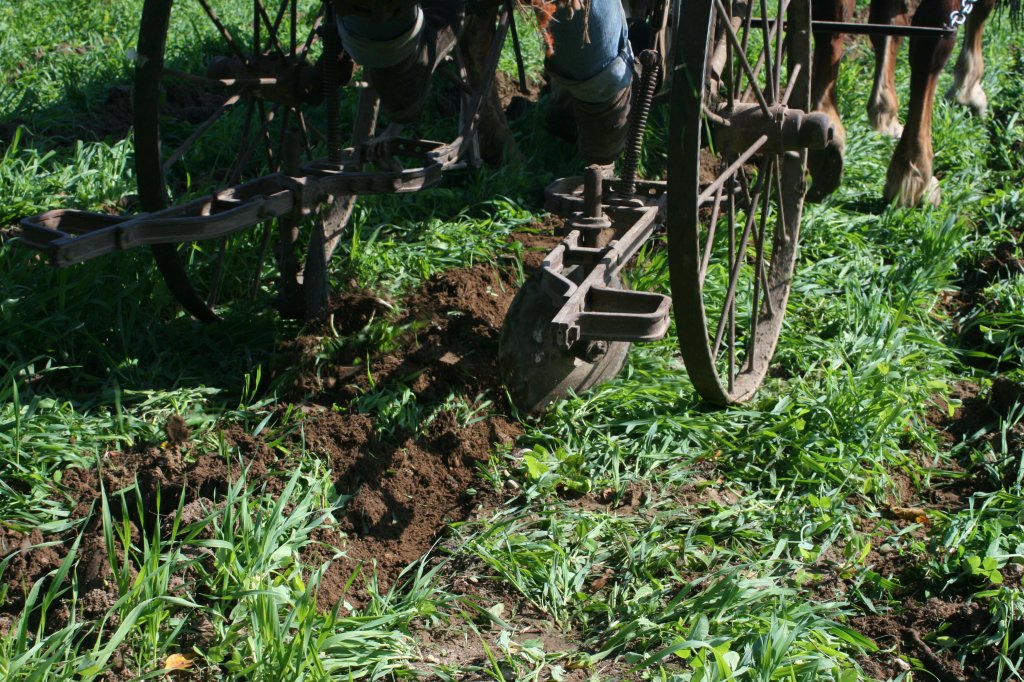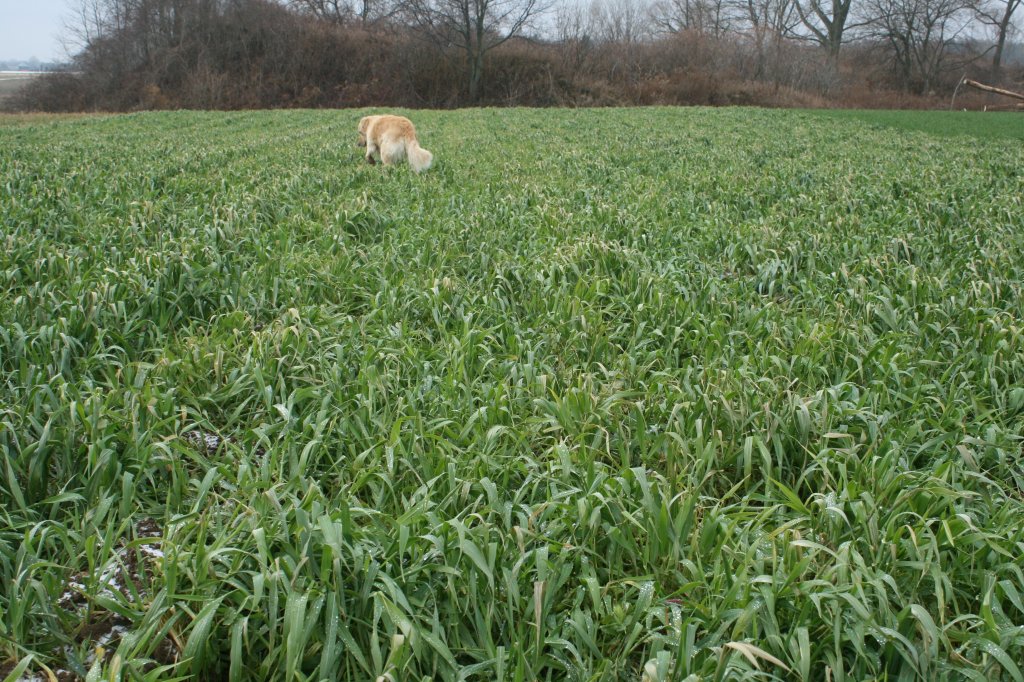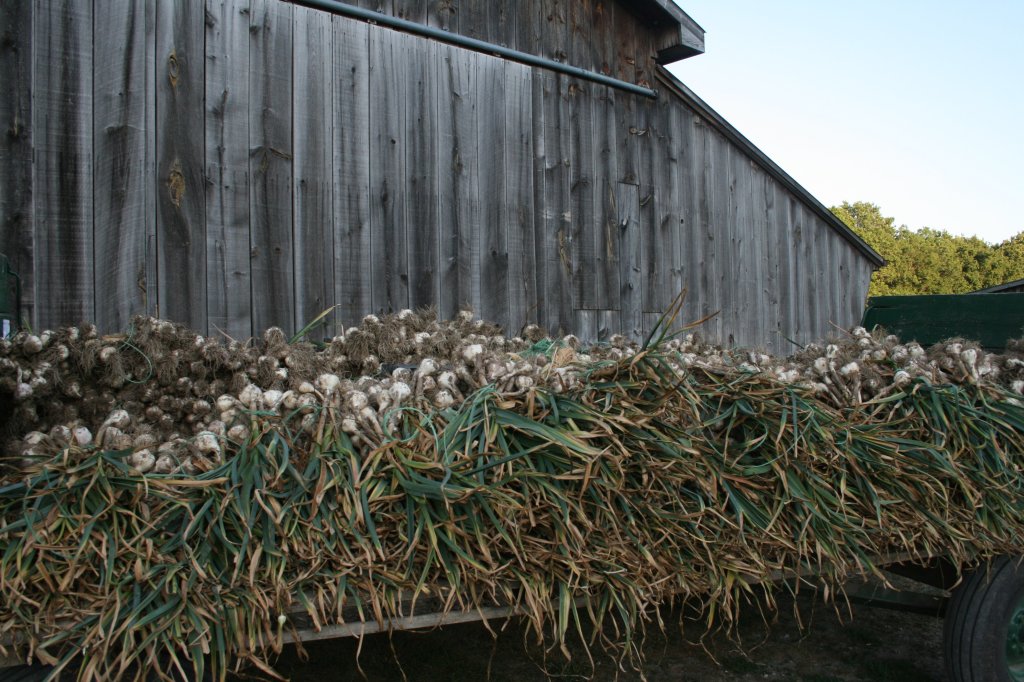I think most vegetable farmers will agree that planting garlic is one of the most satisfying farm chores. There’s something about the end of the season also being the beginning of the next. It’s also one of the most common crops for which farmers save their own seed- an act that feels pretty special and empowering.
What could make garlic planting any more satisfying (and profitable)?
Minimum tillage (zone-till) garlic planting into a standing cover crop
At the beginning of the month, I had the pleasure and honor of presenting at the first annual conference put on by the Ecological Farmers of Ontario where I met Ken Laing. Ken has been farming with horses for over 30 years at Orchard Hill Farm in St. Thomas, Ontario. He’s the kind of farmer whom I love to have in the audience and who also makes me a little nervous because I have many years to go before I can speak with the knowledge that he does. He told me about one of their greatest successes with cover crops and reduced tillage: garlic. Ken was inspired by Eric and Anne Nordell in Pennsyslvania, who wrote about their system for reduced-till garlic planting in the Small Farmer’s Journal (great photos if you click on this link). Interestingly, they said they were inspired to try this system after visiting Steve Groff’s field day in 1996. The power of field days to inspire is unsurpassed.
Both the Laings and the Nordells farm with horsepower, but I think their systems could easily be adapted to human or tractor power. They are also both organic growers, and face the ultimate conundrum in organic production: how to eliminate tillage from the system altogether. Ken is careful to clarify this system is not no-till “because it does involve tillage but it does avoid leaving the ground bare over winter and the expense of mulch and the labor to apply it.” Indeed. Nobody has entirely figured out no-till organic, but these reduced tillage systems that actually work are a great step forward.
Seeding the cover crop & planting garlic in fall
The Nordells seed their oat/pea cover crop in August. Ken says they seed theirs (oat/barley/pea) in the beginning of September after plowing down alfalfa. The grass-legume combination provides many benefits over a single species cover crop. (As a sidenote, rotations that include a soil-building hay crop instead of continuous vegetable production can be great for soil quality).
Whereas the Nordells plant their cover crops and garlic in ridges, Ken found that with their well-drained soil, ridges made no difference and just created more work. Every soil is different.
Ken says that this year: “The garlic was planted Oct. 10 into trenches opened with the row cultivator with a center mounted furrow opener. The garlic cloves were dribbled into the trench by hand roughly spacing it at 6” (see above photo). The row cultivator was then outfitted with hilling discs to close the furrow.”
“The picture with the dog is the same field Dec. 3. The cover crop has recovered from the disturbance of planting to the extent that the rows are no longer distinguishable.”
“It takes about one morning to do the planting and covering on the .25ac we grow for our 220 member CSA and for our own seed.”
Dealing with weeds the following year
Does this winterkilled cover crop produce enough biomass to act as a weed-suppressing mulch? Not really. Here’s Ken’s description of weed management in spring:
In the spring as soon as the ground is dry enough I go through with the riding row cultivator. The first pass is made with hilling discs cutting away from the row to cut through the residue and turn over some soil to cover the residue. There will also be 2 straight teeth on each side instead of 3 so that the cultivator does not plug with the residue. Later in the season I will use 4 sweeps on each side of the cultivator to be more thorough and also make 1 or 2 passes with the hilling discs to bury small weeds in the row and minimize hand weeding and hoeing.
Fertility
Prior to cover crop planting, Ken amended this year’s field with 4 t/ac horse manure, a small amount of dolomitic lime and Tennessee rock phosphate, and 500 lb/ac gypsum with zinc and copper.* The Laings’ garlic looks beautiful and they have successfully been implementing this system for years.
Can I go a whole post without mentioning radishes?
No.
*When I heard about the gypsum, I thought “hmmm… what about seeding strips of radish to capture calcium and sulfur instead?” I don’t know if this modification to the system would work, but radish is able to capture deep sulfur that has leached below the rooting depth of most crops and make it available to the following crop. Radish tissue is also very high in calcium. For a point of reference, 500 lb of gypsum provides about 90 lb of sulfur and 120 lb calcium. A monoculture radish cover crop can have 50-90 lb of sulfur and even more calcium in its biomass (roots and shoots).
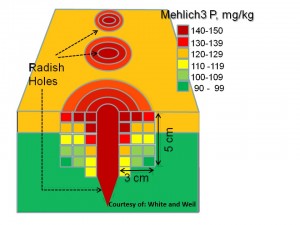
Forage radish concentrates P in its biomass, leaving higher P in the soil around its taproot as it decomposes. From White & Weil 2011.
Oh, and the area around decomposing radish root holes also has higher phosphorus than the surrounding soil. “Banding” radish can essentially have the same effect of “banding” fertilizer. Joel Gruver of Western Illinois University discusses this banding effect from radish with respect to P and K in this video:
Conclusions
Garlic planting can get even better if you grow your own mulch in situ with cover crops. And if you get a golden retriever. Thanks to Ken Laing for sharing this method with me and, as usual, get in touch with me (or him) if you have any questions.

